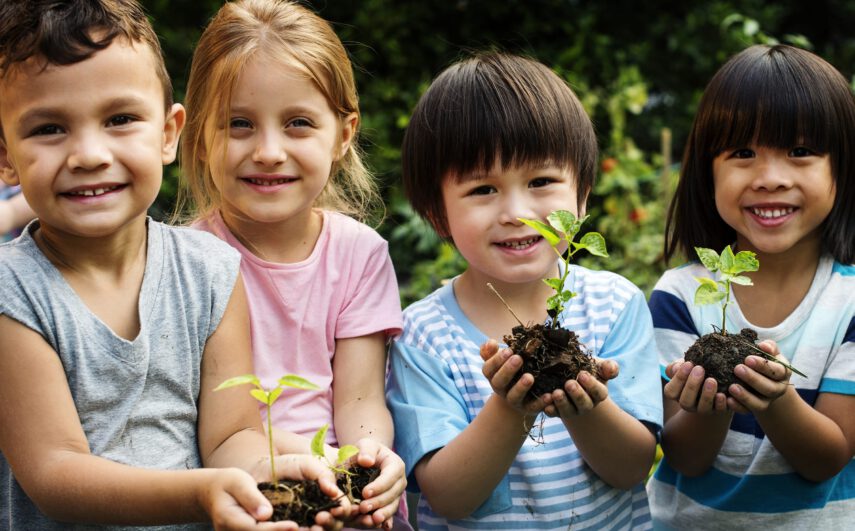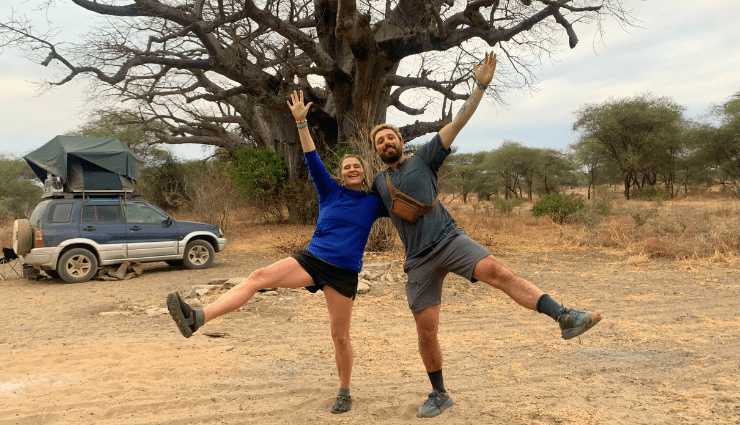Environmental Education Now?

Teleport back a few decades and you’ll find a handful of independent schools offering a course or two on ecology and perhaps a class on environmental literature — usually a one-off elective for seniors focusing on Thoreau, Rachel Carson, Edward Abbey, and the like. Today, the landscape is changing. A growing number of independent schools are looking with greater care at all their institutional practices — including energy use, waste management, and food sourcing — through an environmental lens. They are viewing every new building project and the overall master planning in terms of the environmental impact. Some schools have hired sustainability coordinators to ensure a steady institutional commitment and to manage the growing list of related community-life programs and student clubs. And, yes, more schools are starting to open up the curriculum for environment-related courses.
For those engaged in the work, these developments are deeply appreciated. However, they will also tell you that the shift feels, well, slow — too slow, considering the increasingly clear link between environmental degradation and most of the major challenges facing humanity. So many of the environment-related issues are large and pressing, especially those connected to climate change. Rising sea levels are endangering all coastal areas, include major cities. Massive storms are devastating entire communities and island nations. Droughts are undermining the lives of millions and creating dangerous societal instability. Resource deprivation is leading to civil unrest and war. Hundreds of species are now under threat of extinction. And in just about all instances, there are issues of justice at play.
Do independent schools — all of whom include a commitment to the common good and student moral development in their missions — have an obligation to focus more systemically on environmental education in both community practices and the curriculum? If schools say they prepare students for the world they will enter, shouldn’t they shift environmental matters from a side concern to a central one? More and more educational thinkers argue that they should. These educators don’t suggest that schools reshape the entire curriculum and community life around environmental matters — though there are plenty of people who would love to see this — but that schools consider more carefully what their role is in educating students to be environmentally literate citizens.
In the independent school world, the turning toward environmental programming has resulted in some compelling changes. Most of the traditional boarding schools in New England, to take just one group, have made some important strides. Many of them have joined the Green Schools Alliance and have signed the Green Schools Climate Commitment to reduce carbon emissions, engage in environmentally friendly community practices, and rethink all operations through a green lens.
Individual schools have also taken their own initiative. Hotchkiss School (Connecticut) recently build a state-of-the-art biomass energy plant and bought a neighboring farm to use as a source of local food and as an outdoor environmental science and arts classroom. The school is committed to being carbon neutral by 2020. The Berkshire School (Massachusetts) has built one of the most impressive solar arrays (eight acres, with 8,332 photovoltaic solar panels). It uses its new, LEED-certified science and math building as a living laboratory, offers an engaging course in sustainability, and has established a number of sustainability goals in its strategic plan.
At Miss Porter’s School (Connecticut), many students participate in the school’s Earth Club, an active, student-run environmental group focusing on community education and activism. The school also appoints e-proctors to help ensure an environmental consciousness in dorm life. It has established a large campus garden for composting and growing food, and looks for opportunities to connect students with the broader community efforts, including sending students to the People’s Climate March in 2015.
Phillips Exeter Academy (New Hampshire) just completed construction on a new field house that includes 1,500 solar panels on the roof, enough to heat 60 houses. Exeter students can take part in any of 13 environmental clubs — from farming and gardening to beach cleanup and wildlife conservation. The English department offers a popular course in environmental literature (Literature and the Land), while the science department offers courses on ecology and Earth systems. This year, as part of the school’s innovative programming, the school is offering a new interdisciplinary, project-based course on “Design Thinking and Sustainability” in which students will choose an environmental problem to explore, then design a project to solve the issue. Another coordinated humanities and science course will take students to Iceland for a three-week study of glaciers. This year, a group of students is also investigating water quality issues in the town of Exeter. The town water has been a problem for years, almost always exceeding regulations for one toxin or another. The students not only want to know why, but also what can be done about it.
For the past few summers, Exeter has also hosted the Environmental Literature Institute, run by English teacher and sustainability education coordinator Jason Bremiller. The institute is designed to engage educators in ways to improve the teaching of environmental literature and ecology.
One of the more impressive environmental education programs is housed at Choate Rosemary Hall (Connecticut). In 2012, the school built The Kohler Environmental Center, whose mission is to create a scholarly community dedicated to promoting environmental understanding, stewardship of the land, and social responsibility.
The building itself is a testament to what is possible in energy efficiency today. This self-sustaining, LEED-certified platinum building includes solar and geothermal energy supported by biodiesel from waste vegetable oil. It houses three working laboratories, two classrooms, a research greenhouse, and housing for students and faculty. The core work of the center is as the home to Choate Rosemary Hall’s Environmental Immersion Program, a yearlong residential and interdisciplinary program open to juniors and seniors with a deep interest in this work.
The program, in its seventh year, requires students to apply. Those accepted live and learn at the center for their junior or senior year. The focus is fully on the environment, examined from as many perspectives as possible. Students study ecology, environmental literature, environmental ethics, and social sciences through an environmental lens, environmental economics, nature photography, and more. The program ends with a cross-disciplinary research capstone project.
One could focus on just about any region of the country and find independent schools doing similar work. However, while all of these initiatives represent a positive change, many educators in the field worry that all these efforts are still a sideshow at the vast majority of schools. The Environmental Immersion Program at Choate, for instance, sits on the margins of the curriculum as one of six “signature” programs offered at Choate — including robotics, Arab and Middle East studies, an arts concentration, science research, and government and public service. In other words, it’s a niche program primarily serving a small group of students annually, with some additional engagement with other students and with programs designed for the broader local community.
Stephen Siperstein, who teaches English and environmental humanities at the Kohler Environmental Center, loves his work and says, after three years, that he is still amazed and thankful that the center and program exist. But he is also concerned that so many students at Choate Rosemary Hall and elsewhere are graduating from high school these days without a deep enough understanding of environmental issues and their human impact. His is not just a hope that all students understand many of the man-driven changes to the natural environment, but that they understand how environmental matters intersect with just about every social issue and challenge we face — from droughts and food shortages to the rise of disease, war, racial injustice, and anxiety. If we are to address world challenges, he says, we need graduates who have a deep understanding of the interconnectivity of environmental and social issues.
A few schools — such as The Vermont Commons School (Vermont) and Midland School (California) — are taking the lead in developing programs that center on environmental matters, linking all subject matters and carefully considering all community choices through an environmental lens. At Midland School, for instance, the integrated, place-based curriculum is designed to help students see the connection among the environment, culture, and history. This boarding school puts an emphasis on living a sustainable life, which includes everything from students building solar panels for the school to stoking a wood stove to heat water for every shower they take.
At Vermont Commons School, the stated central purpose of all academic activities is to provide students with “the skills, knowledge, and experiences to understand the interconnection of their local and global ecosystems and communities, to recognize their own roles in these systems, and to formulate a personal investment in their natural and social worlds.” This isn’t a marketing slogan. The school really does follow through on shaping the curriculum in unique ways to ensure that students see the world through an environmental lens. In English, for instance, the literature that students study is organized by themes that reflect and explore relationships between people and their environment. The science program aims to produce “naturalists, scientists who understand the environment and their place within that system.” The school’s service program connects learning to community engagement and environmental stewardship.
Aware environmental educators are all hoping that more schools follow this lead. “More than anything, we’re need to elevate the discourse,” says Exeter’s Jason Bremiller.
So, what’s the delay?
For one, schools change slowly. Even as more schools see that students need both a clear environmental ethic and knowledge of the related science and social issues, it’s easier for schools to focus on smaller changes at the already fluid community-life level than on the curriculum. In some ways, the environmental education movement is comparable to the movement in schools a decade ago to increase awareness of the value of racial and ethnic diversity. The changes start at the community-life level and then slowly make in-roads in the curriculum. Regarding diversity, the shift to a broad multicultural curriculum and the need for all teachers to have the skills and knowledge to teach such a curriculum to a racially diverse student body has been a work in progress. We’re still getting there.
While those who are involved in environmental issues in the schools and the culture at large think the problems are clear and that solutions need to be addressed urgently, they also understand that these schools are working in a larger culture that struggles to address environmental matters well — and where parent anxiety over college prep requires schools to remain linked to most of the traditional academics.
These days, we may elect candidates for state and national office who care about environmental sustainability but these are still candidates who put their energies primarily into other issues. Schools seem to be in the same boat. Most educators and school leaders care about environmental education. Most will tell you that environmental issues need to be addressed at the curricular level, yet few make it their main concern. The majority of schools still see the subject as a conversation for science classes and maybe an elective or two. Others are happy to let students establish environmental clubs. But they don’t push for community-wide conversations on infusing environmental education across the curriculum.
But the tide is starting to turn.
Events such as the Environmental Literature Institute at Exeter are starting to make in-roads into independent schools and even into public education. The simple goal is to raise greater consciousness for the need for better environmental education across the K-12 spectrum and to share ideas on what that education should and can look like.
What Bremiller, Siperstein, and other educators would like to see is more coordinated efforts similar to the changes taking place at the college level. According to the Association for the Study of Literature and Environment (ASLE), there are more than 50 colleges and universities offering undergraduate and graduate programs in environmental literature. The organization itself offers sample curricula and resources to encourage more schools and colleges to engage students in understanding humanity’s connection and impact on the natural world.
As the ASLE website notes, this is a growing “vibrant international community of scholars and teachers working across the humanities and arts, representing a variety of disciplines including literature, history, philosophy, environmental studies, cultural geography, film and media, cultural studies, women and gender studies, religious studies, ethnography, psychology, and anthropology.”
At the moment, most of the changes in independent schools are driven by bottom-up initiatives — especially by the students, many of whom clearly see the environmentally driven challenges ahead for them and future generations. The next logical step is for school leaders and trustees to step into the conversation with both feet and examine the institutional approaches to community life and the curriculum.
The environmental educators I’ve spoken to would love to see all schools develop a clear vision for their environmental sustainability efforts — from the sourcing of energy and food, to extracurricular programming, to realigning the curriculum to include environmental matters scaffolded across the academic spectrum. In an ideal world, they say, in addition to anything else we do in our schools, all students would not only graduate with deep understanding of the environmental issues that affect all of us, but would also have the knowledge and skills to drive needed changes.
Looking for resources? Here are a few groups supporting environmental education:
Association for the Study of Literature and Environment (ASLE)
ASLE seeks to inspire and promote intellectual work in the environmental humanities and arts. The organization’s vision is an inclusive community whose members are committed to environmental research, education, literature, art and service, environmental justice, and ecological sustainability.
North American Association of Environmental Education (NAAEE)
NAAEE’s mission is to train a cadre of culturally diverse education professionals who have the knowledge, skills, and tools needed to deliver high-quality environmental education in formal and non-formal settings and to strengthen the environmental education field so it can sustain these efforts over the long-term.
Foundation for Environmental Education (FEE)
FEE connects students globally on share concerns and issues — water and air quality, forest protection, ocean life, climate change, social structures, related economic issues, overall health issues, etc.
Independent School Experiential Education Network (ISEEN)
ISEEN is an international learning laboratory and networking opportunity through which independent school experiential educators, administrators, and classroom teachers can share their challenges and successes, learn of and from model programs, and explore the developing role of experiential practices within our educational communities. Its focus is broader than environmental education, but it does focus on sustainability initiatives and outdoor learning.
Environmental Literature Institute (ELI)
ELI is a weeklong teacher-training institute based at Phillips Exeter Academy (New Hampshire) whose aim is to cultivate a community of educators interested in environmental-focused teaching and learning. The instituted emphasizes how the methods and approaches of disciplines in the humanities — including English, Language Arts, Foreign Language Study, History, and Philosophy — can enhance environmental learning.
Michael Brosnan is an independent writer and editor with a particular interest in education and social change. His latest book of poetry, “The Sovereignty of the Accidental,” was recently published by Harbor Mountain Press. He can be reached at michaelbrosnan54@gmail.com.








